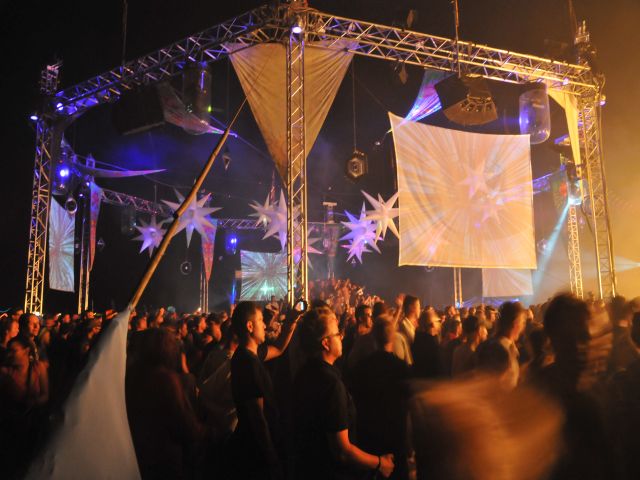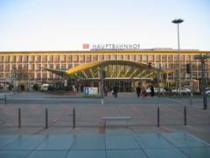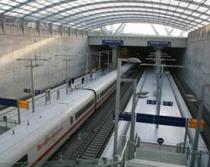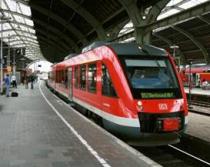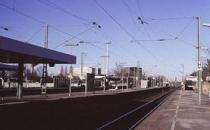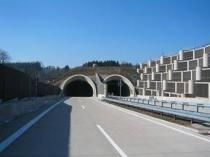Public Address Systems
In every locality, where music or speech is to be transmitted to a larger public, a more or less extensive sound system will be employed. While for many events a small and basic set-up is absolutely sufficient, spacious venues call for the use of complex systems, which need to be accurately positioned and adjusted to each other.
For planning such systems, simulation tools like EASE are made use of, which allow the prediction of parameters like sound pressure level and speech intelligibility in the listener areas. Once the equipment has been installed on site, the respective subsystems need to be adjusted to the room and merged to a coherent whole. This requires extensive measurements. In case the public address system acts as an emergency warning system, e.g. in stadiums or road tunnels, the speech intelligibility for announcements has to be verified according to the relevant regulations.
Commissioning Measurements
Compulsory for successful commissioning measurements is, that the adjustment of the subsystems in free field conditions is accurate. The generation or correction of controller setups after the equipment has been installed, is virtually impossible.
Generally the calibration starts by checking the operation of all the components (alignment, curving, amp gains, limiter, routing, polarity, backup systems). This is where most of the error sources hide, which have to be eliminated prior to the actual measurements.
At 20-50 measuring positions per loudspeaker or array the frequency response on the main axis is recorded, in large venues via a wireless system. These measurements contain any reflexion that occurs in the room and their energy average results in a representative characteristic. From this curve the EQ setting for the respective loudspeaker, also called Hauskurve, is deduced.
Afterwards the levels of all the individual systems or clusters are adjusted to each other.
Eventually from delay measurements at dedicated positions the delays of the subsystems are tuned, so that the localization of the main system (stage) remains unaffected.
The procedure is concluded with a listening test to verify the settings made.
Additionally further measurements can be necessary:
- Determination of loop gain and adjustment of filter settings for feedback elimination
- Measurements of STI, signal level, noise level
Acceptance Measurements of Emergency Warning Systems
The demands for emergency warning systems can be found in the following standards:
- DIN EN 60849 (IEC 60849 and VDE 0828): Sound Systems for Emergency Purposes
- IEC 60268-16: Sound System Equipment, Objective Rating of Speech Intelligibility by Speech Transmission Index
- DIN VDE 0833-4 Appendix G: Measuring Methods for the Determination of the Speech Transmission Index STI
The intention is to capture the speech intelligibility in a single parameter (STI) by means of objective measurement.
Speech intelligibility can be affected by outside influences (noise), room acoustics (reverb, echoes), as well as sound system deficiencies (shortened frequency response, too high or low level, distortion).
Speech intelligibility is measured either by feeding a dedicated test signal into the system while evaluating the premises with a mobile NTI Acoustiyzer, or by analyzing the impulse response, recorded with Monkey Forest, according to the Schroeder method.
Planning and Simulation of Public Address Systems
A sound system and the surrounding room are two inseparable components, which define the acoustic properties of a venue. This is why planning large PA systems is only possible in consideration of the room acoustics. Simulation software like EASE is a powerful tool, which allows a good prediction of acoustic properties of the system before it is installed.
Before planning the system itself, one should establish the technical criteria it has to meet. Depending on the application this can be the sound pressure level, which needs to be attained in a defined frequency interval, an especially linear transfer characteristic for high class music reproduction, a prescribed speech intelligibility for emergency warning or the immission control in the outside areas. Furthermore aspects like the protection of historic monuments, vandalism resistance or a specific optical design can become relevant.
Prerequisite for the simulation are high resolution balloon data of the loudspeakers including phase distribution in at least a 5° raster.
The simulation procedure starts by constructing the room, which the equipment is to be installed in. Here all the acoustically relevant elements have to be included, at the same time irrelevant details remain out of consideration, in order to keep the computing time within a limit. As precisely as possible, all the elements are now given parameters for absorption and scattering, which depend on the material used and its structure.
With this model already, the reverberation time according to Eyring or Sabine can be calculated. Comparing the result to reverberation measurements of the room allows readjusting in the model.
Now the loudspeakers are inserted into the model. In case line arrays are going to be used, tools for determining the basic configuration are useful. The objective is a constant coverage of all the audience areas, while avoiding highly reflective surfaces.
Next, the distribution of direct SPL is simulated. Even for a high resolution the computing time for this is rather short. The results in the audience areas as well as outside can be used to adjust the arrangement of the loudspeakers.
Afterwards the impulse responses at selected positions are simulated according to the mirror image source method, using the Aura module in EASE. From here, more parameters can be calculated, like the precise reverberation time with the model sources, total SPL and speech intelligibility.
Ultimately the auralization is generated by convolving arbitrary signals with the impulse responses, to allow an impression of the system’s sound in the room.
Concert Sound
The demands concerning the quality of sound reinforcement at live concerts have increased constantly over the past years. A linear transfer characteristic for all audience areas, rich and pounding bass transmission, and considerable levels free from distortion are expected by the listener just as well as by the involved technicians. Rising levels have also increased the risk of feedbacks, which can be reduced by a directional and focused coverage of the audience areas and by excluding the stage from the target area.
Beside traditional loudspeaker clusters, powerful line arrays have made their way on stage, and make possible an even coverage of wide listener areas. Recently a directional bass reinforcement, implemented with cardioid configurations or other bass arrays, is getting increasingly popular. The effort for planning these loudspeaker arrangements is higher than for conventional arrays, and even intensified by delay lines and specific solutions for boundary areas or side rooms.
Churches
While the demand for high levels is not the main issue for sound reinforcement in churches, often it is the very long reverberation time, which nevertheless requires a thorough planning, in order to ensure a sufficient speech intelligibility. Furthermore, beside the technical aspects, mainly aesthetical considerations and the preservation of monuments are to be included in the process of planning.
The planning is started with by building a CAD model in EASE, which includes all the acoustically relevant planes. In many cases the churches’ special architecture requires exceptionally elaborate models. The choice of loudspeakers more and more comes down to column speakers with an electronically controllable directivity, which allows a very targeted coverage of the churchgoers, while at the same time they can be placed rather discreetly.
After installing the system, an accurate calibration is performed, measuring at numerous positions from which the filter curves are deduced.
Speech Transmission
Sound systems for speech reinforcement have a wide field of application ranging from conventions, press conferences and lecture halls to general meetings or party conferences. Common to all these applications is the need for an excellent speech intelligibility, even levels in the audience as well as a high resistance to feedback.
Sports Complexes
While planning public address systems for sports complexes like stadiums or sports halls, emphasis is put on emergency warning and announcements. Additionally music and commercials are to be played back in good quality. The intention of using the installed systems for concert purposes also increases the requirements to linearity and bottom end reproduction. Even assuming considerable noise levels by the public itself, the systems have to ensure speech intelligibility and high sound pressure levels.
Predominant use of solid, reflective materials like concrete and glass results in long reverberation times, which compromises the speech intelligibility. Often the public provides the only effective absorber. That is why as choice of loudspeakers, only those models come into consideration, that can be focused accurately to the public areas with their even and well-defined directivity, while avoiding extensive dispersion of sound energy to reflective planes. For this, beside traditional horn systems also line arrays are used, whose directional characteristics can be adjusted flexibly to the venue’s geometry.
While simulating the complex, positions all over the public areas are being evaluated for achievable sound pressure level and speech intelligibility.
Convolution with the simulated impulse response allows the auralization of any signal:
Audio Sample 1: Auralization Stadium with Line Arrays without Audience
Audio Sample 2: Auralization Stadium with Line Arrays with Audience
Audio Sample 3: Auralization Stadium with Horn Clusters without Audience
Audio Sample 4: Auralization Stadium with Horn Clusters with Audience








